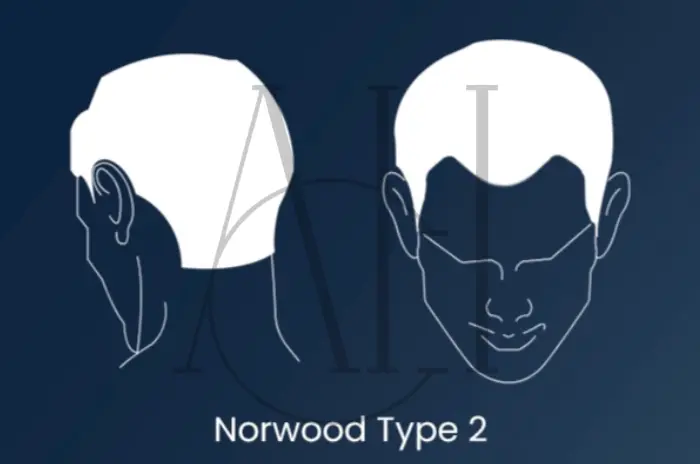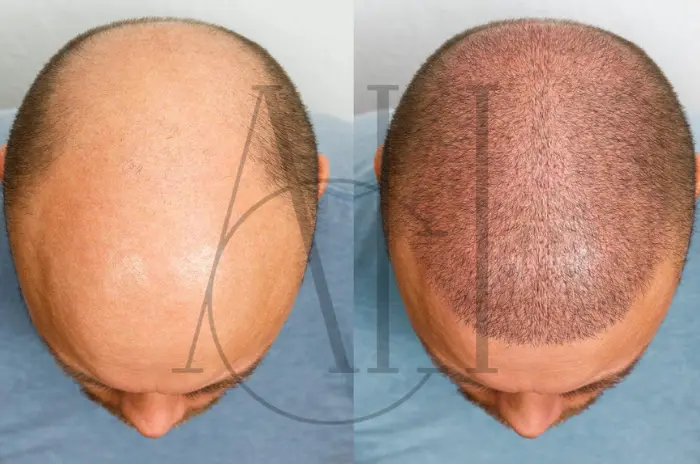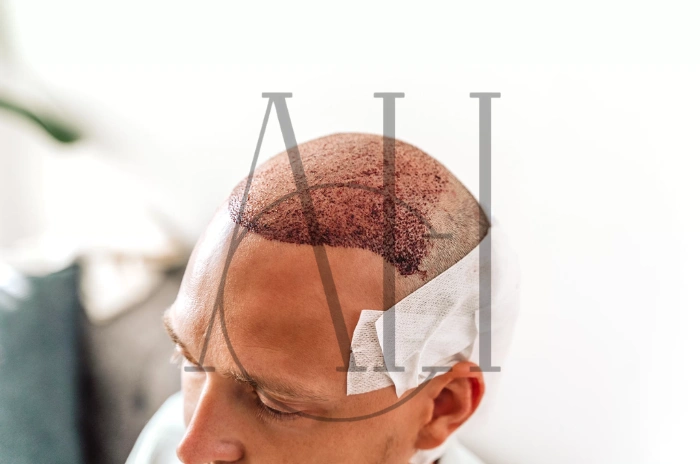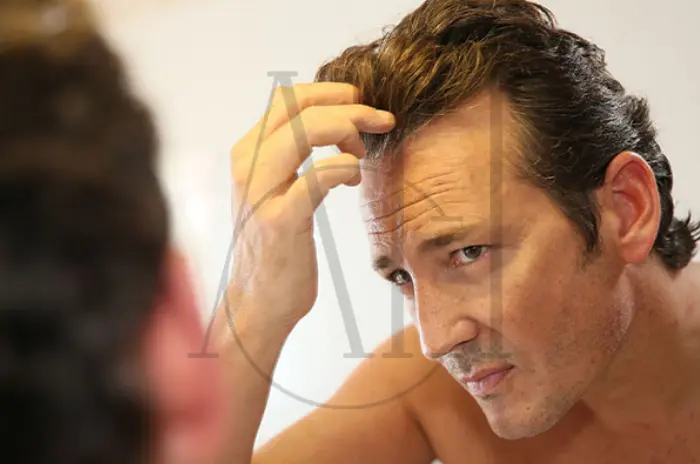Hair loss is a concern that affects millions of men worldwide, and understanding its progression is crucial for making informed treatment decisions. The Norwood 2 stage represents an early phase of male pattern baldness where intervention can yield excellent results. This comprehensive guide explores everything you need to know about Norwood 2 hair loss, including medications, hair transplant Norwood 2 procedures, and expected outcomes.
Whether you’re noticing temple recession or wondering if your mature hairline is normal, this article will help you understand your options and make the best choice for your situation.
Table of Contents
ToggleUnderstanding the Norwood 2 Stage of Hair Loss
The Norwood scale is the gold standard classification system for measuring male pattern baldness progression. It was developed by Dr. James Hamilton and later refined by Dr. O’Tar Norwood, providing a clear framework for identifying hair loss stages.
Norwood stage 2 is characterized by mild recession at the temples, creating a more triangular hairline shape. At this stage, the recession typically extends no more than 2 centimeters from the imaginary line connecting the ears across the top of the head. The frontal hairline remains relatively intact, and most men still have substantial hair coverage.
This stage differs from a mature hairline, which is a natural aging process occurring in most men between ages 17 and 29. While a mature hairline shows slight recession, Norwood 2 receding hairline indicates the beginning of androgenetic alopecia, a progressive genetic condition. The key distinction lies in the pattern and extent of temple recession, with Norwood 2 showing more pronounced triangular temple areas.
Understanding where you fall on the scale helps determine the urgency of treatment. Early intervention at the Norwood 2 hair loss stage offers the highest success rates for both medications and surgical procedures.
Signs of a Norwood 2 Receding Hairline
Identifying Norwood 2 receding hairline early allows for timely intervention. The primary indicators include noticeable recession at both temples, creating distinct triangular patterns. These recessed areas typically measure 1.5 to 2 centimeters from the midpoint of the pupil when looking straight ahead.
You might notice increased visibility of your forehead corners when styling your hair or taking photographs. The hairline forms a subtle “M” shape, though less pronounced than advanced stages. Many men first become aware of this pattern when they see old photographs and notice the gradual change.
Another telltale sign is increased hair shedding in the temple areas. You may find more hairs on your pillow, in the shower drain, or when running your fingers through your hair. The hair in these regions often becomes finer and lighter in color before eventual loss occurs.
Temple hair loss at this stage might also be accompanied by a slight widening of the hair part. Some men experience itching or tingling sensations on the scalp, though this isn’t universal. If you’re comparing your current hairline to photos from 1-2 years ago and notice distinct changes, you’re likely experiencing Norwood stage 2 progression.
How Long Does Norwood Stage 2 Last
The duration of Norwood stage 2 varies significantly between individuals, depending on genetic factors, lifestyle, and whether treatment is pursued. Without intervention, this stage typically lasts anywhere from several months to several years before progressing to Norwood 3.
Genetic predisposition plays the most significant role in progression speed. If your father or maternal grandfather experienced rapid hair loss, you’re more likely to progress quickly through the stages. Conversely, slower family patterns often indicate a more gradual progression.
With proper treatment using medications for Norwood 2 like finasteride or minoxidil, many men successfully halt progression at this stage for years or even decades. Clinical studies show that approximately 65% of men using finasteride maintain or improve their hair status over five years.
Lifestyle factors also influence duration. High stress levels, poor nutrition, smoking, and certain medications can accelerate progression. Men who adopt healthy habits and begin treatment early often remain at this stage indefinitely. The key is recognizing that how long does Norwood 2 last is largely within your control through proactive management and consistent treatment adherence.

Is Norwood 2 the Start of Balding
The question is Norwood 2 balding concerns many men experiencing temple recession. The straightforward answer is yes, Norwood 2 represents the beginning of androgenetic alopecia, a progressive condition commonly known as male pattern baldness.
However, being at Norwood 2 doesn’t mean severe baldness is inevitable. This early stage offers the best opportunity for intervention with highly effective treatments. The condition is driven by dihydrotestosterone (DHT), a hormone that shrinks hair follicles in genetically susceptible individuals.
It’s important to distinguish between a mature hairline and actual balding. A mature hairline is a non-progressive change affecting nearly all men, moving the hairline slightly higher but maintaining density. Norwood stage 2, however, shows the characteristic temple recession pattern that tends to continue without treatment.
The psychological impact of recognizing early balding shouldn’t be underestimated. Many men feel anxious or self-conscious about their appearance. The good news is that modern treatments are remarkably effective at this stage, and surgical options like FUE hair transplant procedures can restore natural-looking results with minimal scarring.
How Many Grafts Do You Need for Norwood 2
When considering a hair transplant for Norwood 2, understanding graft requirements is essential for planning and budgeting. The question how many grafts for Norwood 2 depends on several factors including the size of the receded areas, desired density, and natural hair characteristics.
Typically, restoring temple areas at Norwood 2 requires between 800 to 1,500 grafts total. This range accounts for both temples and may include minor adjustments to the frontal hairline for optimal aesthetic results. Each graft contains 1-4 hair follicles, meaning you’re transplanting approximately 2,000 to 4,000 individual hairs.
| Factor | Graft Requirement Impact |
|---|---|
| Temple size | Larger recessions need 200-300 more grafts |
| Desired density | High density requires 20-30% additional grafts |
| Hair thickness | Fine hair needs more grafts for coverage |
| Hair color contrast | High contrast may need extra density |
Surgeons typically recommend conservative graft numbers at this stage to preserve donor hair for potential future procedures. Since Norwood 2 hair transplant patients have significant donor reserves, planning for long-term management is wise.
Your surgeon will assess your donor density, which should be at least 60-80 follicular units per square centimeter for optimal results. They’ll also consider your hair’s color, texture, and curl pattern when determining the precise number needed to achieve natural-looking hair transplant results.
Hair Transplant for Norwood Stage 2
A hair transplant for Norwood stage 2 offers excellent results when performed by experienced surgeons. The procedure involves relocating permanent hair follicles from the donor area (typically the back and sides of the scalp) to the receding temple regions.
The FUE hair transplant (Follicular Unit Extraction) technique is most commonly used for Norwood 2 patients. This method extracts individual follicular units using tiny punches, leaving minimal scarring and allowing patients to wear short hairstyles. The procedure typically takes 4-6 hours for the required 800-1,500 grafts.
Recovery is relatively quick, with most patients returning to work within 3-5 days. The transplanted hairs initially shed within 2-4 weeks, which is completely normal. New growth begins around month three, with substantial results visible by month six. Final results are typically assessed at 12-15 months post-procedure.
Success rates for Norwood 2 hair transplant procedures exceed 95% when performed by qualified surgeons. The transplanted follicles are genetically resistant to DHT, meaning they continue growing permanently. However, surrounding native hairs remain susceptible to further male pattern baldness, making post-operative medication crucial.
Medications for Norwood 2 like finasteride treatment (1mg daily) and minoxidil for hair loss (applied twice daily) help preserve existing hair and enhance transplant results. Most surgeons recommend starting these medications before surgery and continuing indefinitely for optimal outcomes.
Choosing Between FUE and FUT Techniques
While FUE is popular, some patients benefit from FUT (Follicular Unit Transplantation), which removes a strip of scalp and yields more grafts in one session. FUT is cost-effective and efficient but leaves a linear scar. For younger Norwood stage 2 patients, FUE is generally preferred to preserve maximum donor area flexibility.
Realistic Expectations and Planning
Norwood 2 photos before and after procedures show dramatic improvements in temple fullness and overall facial framing. However, patients must understand that hair transplants don’t prevent future loss in untreated areas. A comprehensive approach combining surgery with preventive medications ensures the best long-term results.
Cost Considerations
Hair transplant Norwood 2 procedures typically cost between $3,000 to $8,000, depending on the clinic location, surgeon expertise, and technique used. Medical tourism destinations in Turkey, Thailand, and Mexico offer significantly lower prices while maintaining high standards, making treatment more accessible.
Norwood 2 Medications Transplant Options and Results – Frequently Asked Questions
How many grafts are required for a Norwood 2 transplant?
Norwood 2 hair transplant procedures typically require 800 to 1,500 grafts to restore temple recession and achieve natural-looking density.
How many years does the Norwood stage two last?
Without treatment, Norwood stage 2 usually lasts several months to several years, but with medications for Norwood 2, progression can be halted indefinitely.
Does Norwood stage 2 officially mean you are balding?
Yes, Norwood 2 indicates the beginning of androgenetic alopecia (male pattern baldness), though it’s an early stage where treatment is highly effective.
What are the common signs of a Norwood 2 hairline?
The Norwood 2 receding hairline shows temple recession of 1.5-2 centimeters, creating triangular patterns and a subtle “M” shape at the frontal hairline.




